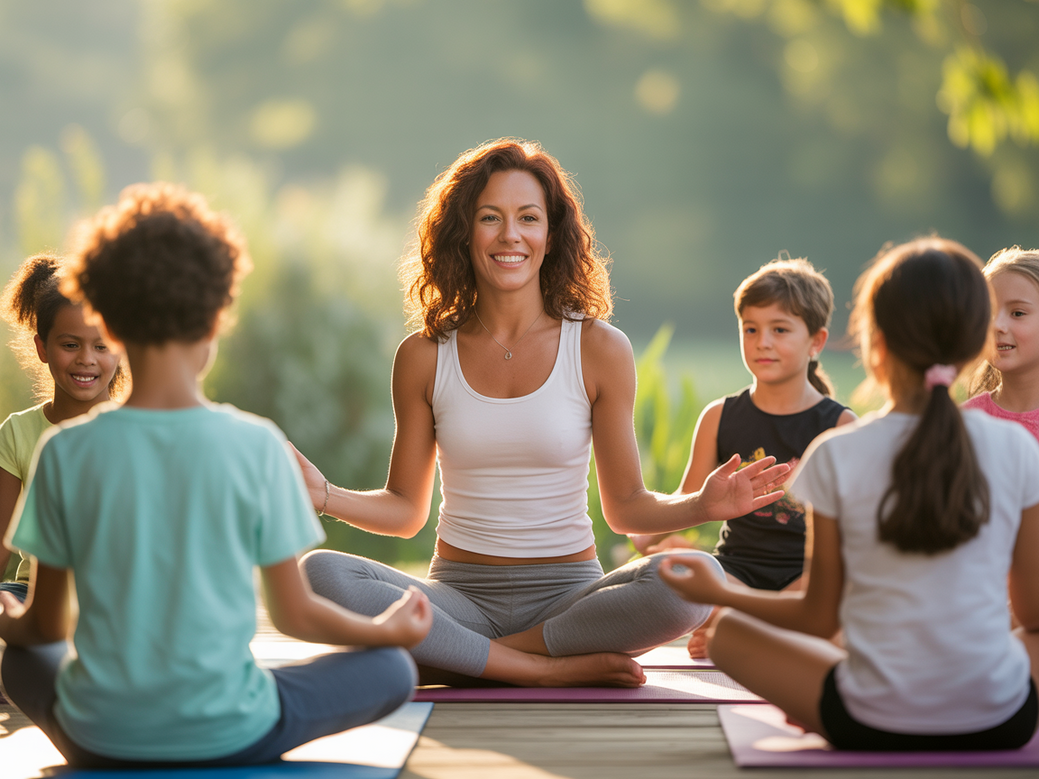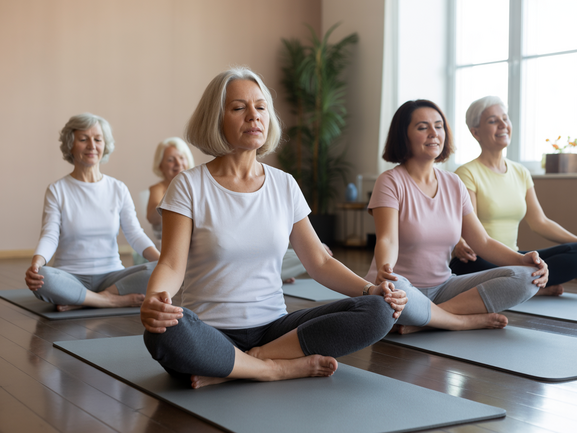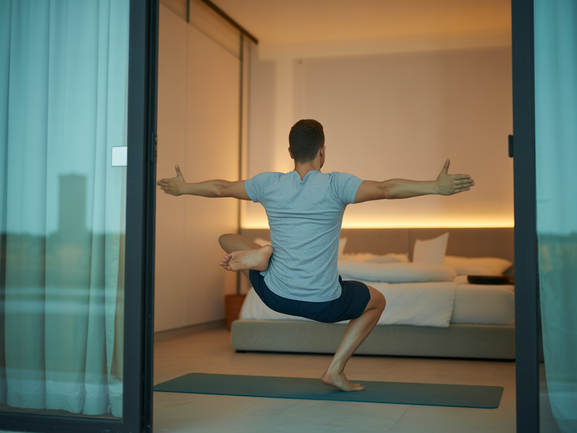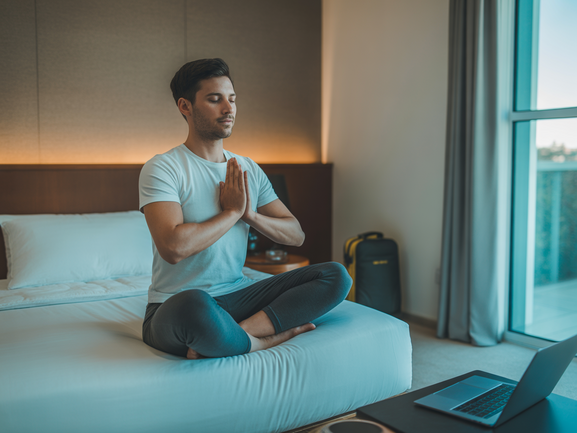Yoga for Kids: The Ultimate Guide to Benefits, Poses & Getting Started in 2025
Yoga for kids is a specialized form of modern yoga, thoughtfully adapted for children and teenagers. It masterfully weaves traditional yoga poses, breathing exercises, and mindfulness concepts into a playful experience using games, storytelling, and music. Unlike adult yoga, the primary goal isn’t perfect alignment but fostering a joyful, non-competitive, and empowering connection with one’s body and mind. This practice of childrens yoga is a key component of youth wellness.
As we navigate 2025, have you considered how to equip your child with the tools for mental and emotional resilience? The modern world presents unique pressures, making practices like yoga and meditation more vital than ever. Fortunately, they’re also more accessible than ever through dedicated platforms like the Vitalizen App, a leader in online yoga for children.

Why Youth Wellness is a Global Priority in 2025
Today’s youth face unprecedented challenges. The combination of increased screen time, academic pressure, and social complexities has led to a well-documented rise in stress and anxiety. It’s clear that focusing on physical health alone is insufficient; mental and emotional well-being are fundamental pillars of a happy, healthy childhood. This is where mindfulness for children makes a significant impact.
A 2025 report from the World Health Organization (WHO) highlights that 1 in 5 teenagers globally experiences a mental health condition. The report strongly advocates for early intervention and accessible wellness tools—like yoga for kids—as a primary strategy to reverse this trend.
This growing awareness is why parents and educators are embracing children’s yoga. It offers a structured, creative outlet for kids to process emotions, calm their nervous systems, and build a robust sense of self. It’s not just a remedy; it’s a proactive strategy for lifelong mental health and a cornerstone of the youth wellness movement.
The Core Benefits of Yoga for Kids
The advantages of introducing yoga for kids extend far beyond physical flexibility. While improved strength and balance are excellent outcomes, the most profound benefits are mental and emotional. Consistent practice equips a child with indispensable life skills.
- Stress and Anxiety Reduction: Controlled breathing exercises (pranayama) taught in kids’ yoga directly activate the body’s relaxation response, helping children feel calmer and more in control.
- Improved Focus and Concentration: Holding a pose or following a guided meditation trains the brain’s ability to focus. This skill is directly transferable to academics and other daily activities.
- Enhanced Body Awareness and Confidence: Children’s yoga helps kids appreciate what their bodies can do in a non-competitive space, fostering a positive self-image and boosting confidence.
- Greater Emotional Regulation: By learning to observe their feelings without judgment, children develop emotional intelligence, allowing them to respond to situations thoughtfully rather than reactively.
- Better Sleep Quality: A calm mind and a relaxed body are precursors to more restful sleep, which is critical for a child’s development, mood, and learning ability.
- Development of Empathy and Kindness: Many yoga for kids classes incorporate themes of kindness and respect for others, helping nurture social and emotional learning.
The Science Behind Yoga for Kids: More Than Just Poses
While the playful nature of kids yoga is its main appeal, there is serious science supporting its benefits. The practice powerfully influences a child’s developing nervous system and brain. It’s a holistic approach that nurtures both mind and body.
When a child practices yoga, they engage their parasympathetic nervous system—the body’s “rest and digest” mode. Deep breathing lowers the heart rate and reduces levels of the stress hormone cortisol. This physiological shift is a tangible skill children can use to manage anxiety. Furthermore, balancing poses enhance proprioception (the sense of self-movement and body position), which is linked to improved focus and cognitive function. Research from institutions like the National Institute of Mental Health (.gov) increasingly supports mindfulness practices for youth mental wellness.
Age-Appropriate Yoga for Kids: A Practical Guide
Effective childrens yoga is not one-size-fits-all. A kids yoga teacher adapts the practice for different developmental stages to ensure it remains engaging and beneficial. This is a core philosophy of the Vitalizen app.
Yoga for Toddlers (Ages 2-4)
- Animal Poses: Meow like a cat, stretch like a dog, and roar like a lion.
- Music and Song: Simple songs that guide movement and capture attention.
- Sensory Play: Using textures and sounds to explore mindfulness.
Yoga for School-Aged Kids (Ages 5-12)
- Yoga Journeys: Themed classes that take kids on an imaginary trip to the jungle or outer space.
- Partner Poses: Encourages teamwork, communication, and trust.
- Simple Breathwork: Learning to use “balloon breaths” or “snake breath” to calm down.
Yoga for Teenagers (Ages 13-18)
- Dynamic Flows (Vinyasa): To build strength and release excess energy.
- Restorative Poses: To combat stress and promote deep relaxation.
- Guided Meditations: Addressing specific teen challenges like exam anxiety or social pressures. Find more on our blog about teen anxiety tips.
How to Start with Yoga for Kids Today
Starting a yoga for kids practice is simpler than you might imagine. You don’t need a fancy studio or expensive equipment. Your living room can be the perfect starting point, and modern technology makes expert guidance incredibly accessible.
💡 Ready to see the benefits firsthand? Download the Vitalizen app and get started with a free introductory class today!
- Create a Calm Space: Designate a quiet corner, lay down a mat or soft towel, and minimize distractions.
- Start Small: Begin with a short, 5-minute guided session. The Vitalizen app offers practices based on the time you have.
- Build a Routine: Try practicing at the same time each day, like after school or before bed, to create a consistent, positive habit.
- Practice *With* Them: Your participation demonstrates that wellness is a family value and makes the activity more fun.
- Focus on Fun, Not Perfection: Celebrate their effort and willingness to try, not how a pose looks. Childrens yoga is about feeling good.
Choosing Your Path: Online Yoga Apps vs. In-Person Classes
Both digital platforms and physical studios offer unique benefits for your child’s yoga journey. The best choice depends on your family’s budget, schedule, and location. In 2025, the flexibility of an online yoga for children platform is a significant advantage.
| Feature | Online Yoga App (e.g., Vitalizen) | In-Person Studio Class |
|---|---|---|
| Cost | Low monthly fee for unlimited access | $15-$30 per class |
| Convenience | Practice anytime, anywhere | Fixed schedule and location |
| Variety | Large library of classes for different ages and needs | Limited to the teacher’s style and class type |
| Community | Digital community features | Direct, in-person interaction with peers |
For example, the Vitalizen App provides a comprehensive library for a low monthly fee—often less than a single studio class. This democratizes youth wellness, making the benefits of yoga accessible to all families.
Ready to Start Your Family’s Wellness Journey?
The creation of Vitalizen was inspired by a passion to make wellness accessible. Luzia’s decade of international experience as a kids yoga teacher is infused into every class on the platform. If you’re curious about how yoga for kids and meditation can support your child, the best way to find out is to try.
Start Your Wellness Journey Now
For more tips on the benefits of mindfulness, visit the Vitalizen blog. For deeper scientific context, authoritative sources like Stanford Medicine (.edu) offer valuable research on child development.
About the Author
Luzia is an internationally recognized yoga instructor and co-founder of the Vitalizen App. With over 10 years of experience teaching yoga and mindfulness to children and teenagers across the United States, Canada, and Europe, she is a leading voice in youth wellness. Her work focuses on making ancient practices accessible and enjoyable for the modern family.
Last update: September 18 2025



